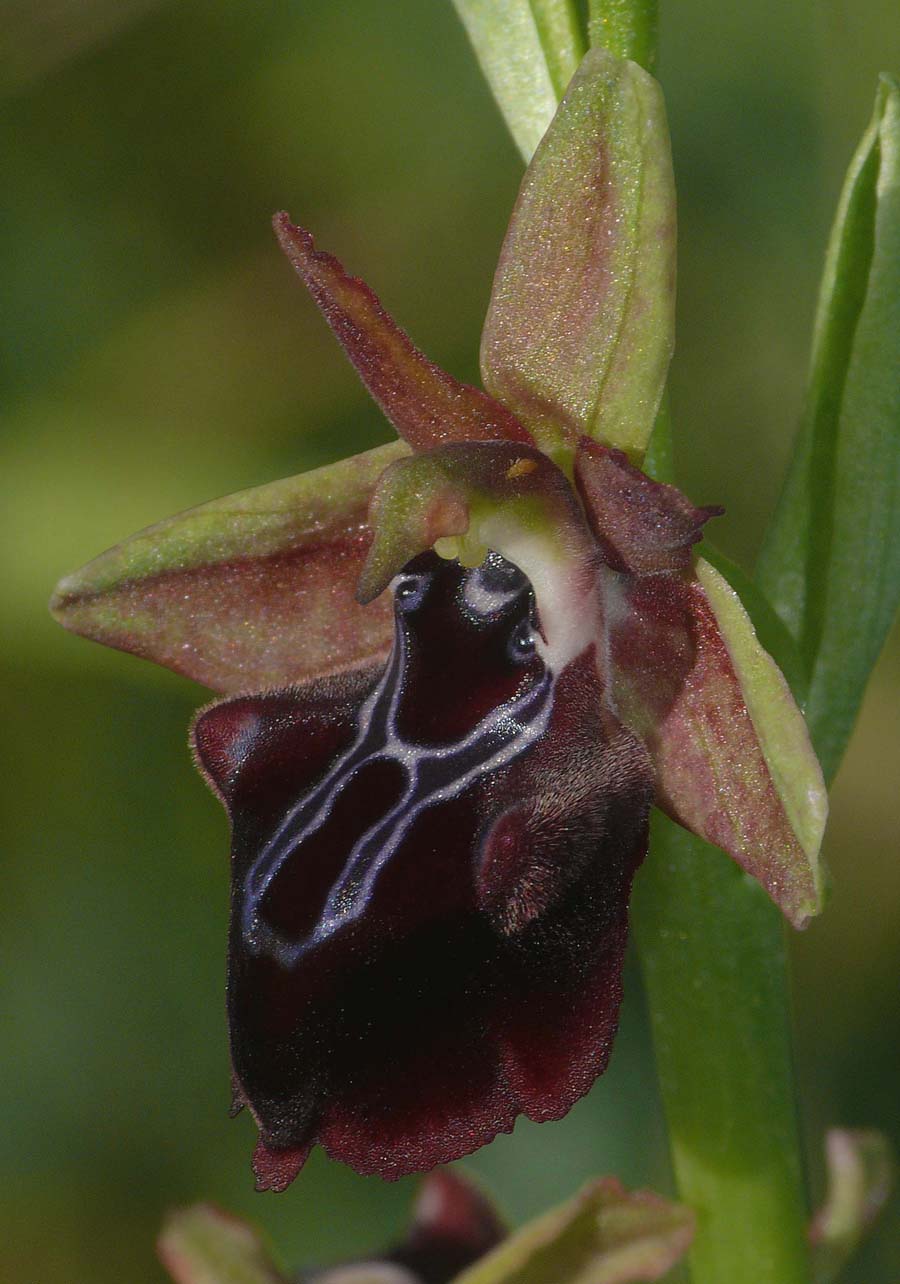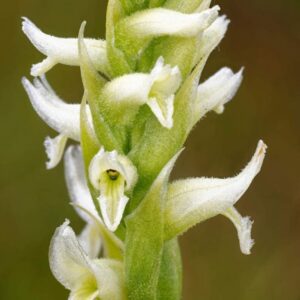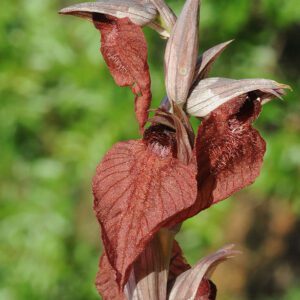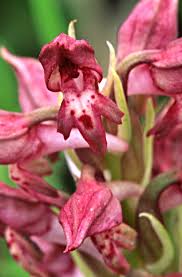Beschreibung
Ophrys mammosa – Busen Ragwurz
O. mammosa wurde erstmals 1807 von Desfontaines aus Samos beschrieben und sein Name bezieht sich auf die markanten Basalschwellungen, was wörtlich „vollbrüstig“ bedeutet. Es handelt sich um eine der häufiger vorkommenden Ophrys im östlichen Mittelmeerraum, die in einer nahezu ununterbrochenen Verbreitung vom ehemaligen Jugoslawien über Griechenland bis nach Israel im Osten vorkommt. In vielen Teilen seines Verbreitungsgebiets kann es reichlich vorkommen. Die meisten Mitglieder der Gruppe weisen ähnliche und leicht erkennbare Merkmale auf, insbesondere die zweifarbigen Kelchblätter mit ihren oft stark rot gefärbten unteren Hemisphären. Die O. mammosa-Gruppe ist eine große und wachsende Gruppe, die mehrere sehr ähnliche Arten enthält, deren Verbreitungsgebiete sich oft überschneiden und die leicht verwechselt werden können. Sowohl in Nordgriechenland als auch in Zypern gibt es zahlreiche „ähnliche“ Arten, die häufig miteinander hybridisieren und Zwischenprodukte bilden, die die ohnehin schon schwierige Aufgabe der Artentrennung noch schwieriger machen. Mehrere der hier abgebildeten Pflanzen weisen Merkmale auf, die auf ein Element der Gen-Ingression und tatsächlich der Introgression schließen lassen. O. mammosa kommt in verschiedenen Arten von Lebensräumen vor, von voller Sonne bis hin zu gesprenkeltem Schatten, obwohl es immer einen geschützten Standort zu bevorzugen scheint, sei es im Laub einer Mauer oder eines Felsens oder, was gewöhnlicher ist, wenn es in leichtem Gestrüpp oder in offenen Wäldern wächst. Wie auf den Fotos zu sehen ist, kann es äußerst variabel sein. Dies ist eine robuste und hübsche Orchidee, die bis zu 70 cm hoch werden kann und bis zu 15 Blüten in einem Stiel enthält. Die Blütezeit ist lang und obwohl sie in den meisten Verbreitungsgebieten im April beginnt, können Populationen auf Zypern bereits Ende Februar erscheinen. Die Bilder stammen aus Zypern, Rhodos und Nordgriechenland und stammen aus der ersten Aprilwoche in der Ägäis und Mitte März auf Zypern.
O. mammosa was first described by Desfontaines from Samos in 1807 and its name refers to the prominent basal swellings, literally meaning “full breasted”. It is one of the Eastern Mediterranean’s commoner Ophrys, occurring in an almost unbroken distribution from the former Yugoslavia, through Greece and as far as Israel in the East. In many parts of its range it can be abundant. Most members of the group share similar and easily recognizable characteristics, most notably the bicoloured sepals with their often strongly red tinged lower hemispheres. The O. mammosa group is a large and growing one, containing several very similar species whose ranges often overlap and which can be easily confused. In both northern Greece and Cyprus, a good number of “lookalike” species co-exist and frequently hybridize, forming intermediates which make the already difficult task of species separation even more difficult. Several of the plants depicted here exhibit characteristics which suggest an element of gene ingression and indeed introgression. O. mammosa can be found in several types of habitat from full sun to dappled shade although it always seems to favour a sheltered position, whether in the lea of a wall or rock, or more usually growing amongst light scrub or in open woodland. As can be seen from the photos it can be extremely variable. This is a robust and handsome orchid which may be as tall as 70cm, containing as many as 15 flowers in a spike. It has a long flowering period and although in most of its range it commences in April, Cyprus populations can appear as early as the end of February. The pictures are from Cyprus, Rhodes and northern Greece, dating from the first week of April in the Aegean and Mid March in Cyprus. |








